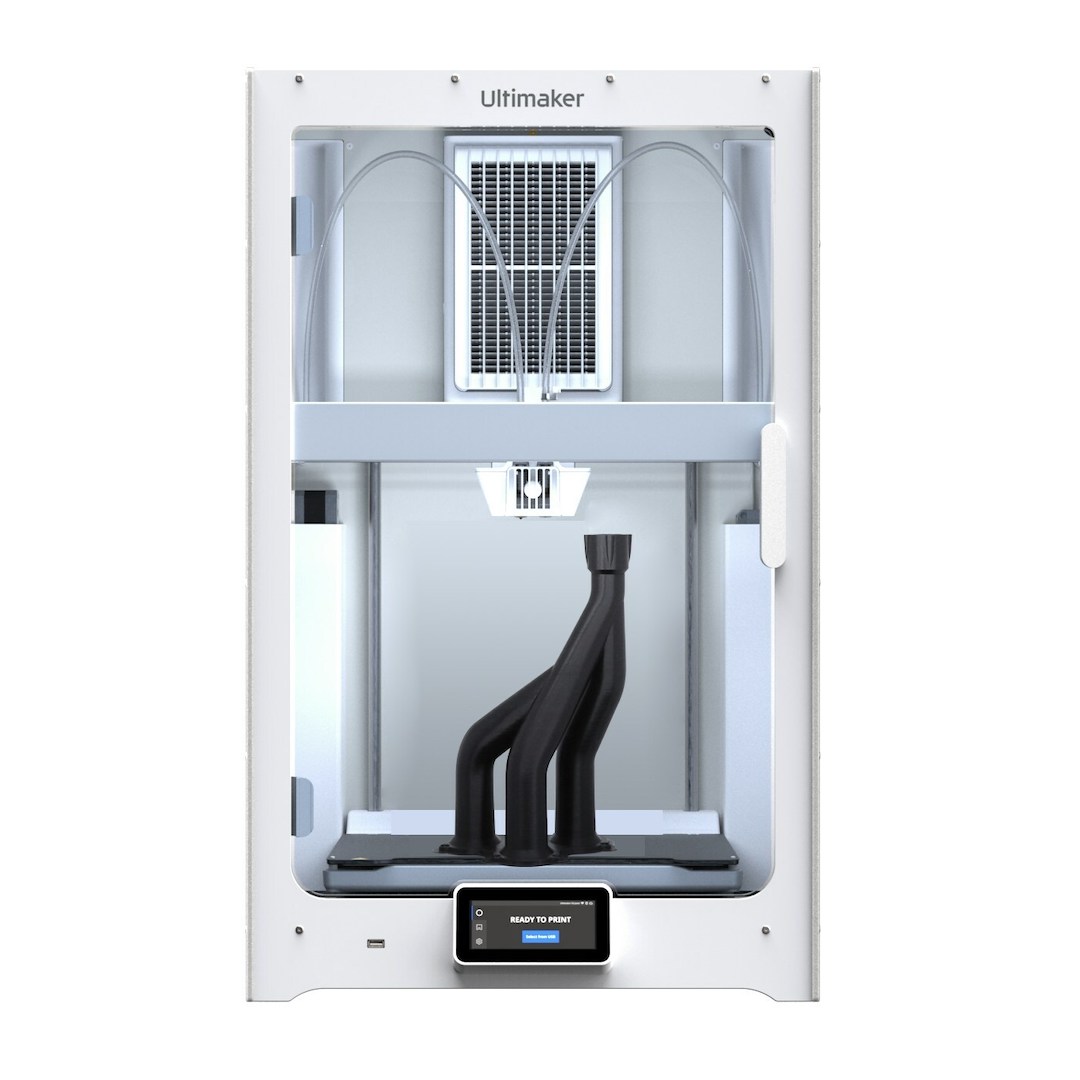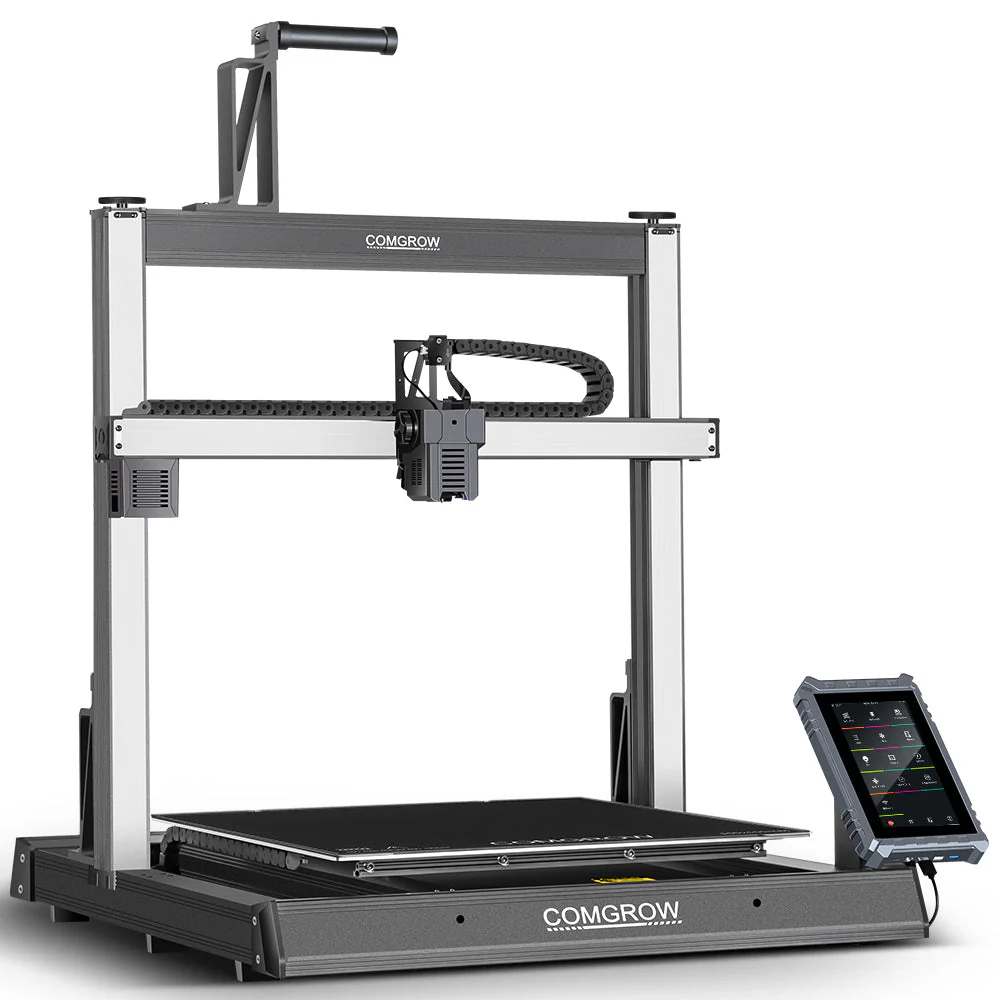Compare S7 vs Comgrow T500
Comparison between the best 3D printers
Choose the best 3D printer at the best price. The cheapest 3D printers are here.
Buy a 3D printer here with 3D Fila.
 |
 |
|
| Model | S7 |
Comgrow T500 |
| Printing Material | Filament | Filament |
| Buy Filament for Ultimaker S7 | Buy Filament forSovol Comgrow T500 | |
| Estimated price | $8300,00 | $799,00 |
| Manufacturer | Ultimaker | Sovol |
| Release Year | 2022 | 2024 |
| Print Volume [mm] | 240x330x300 | 500x500x500 |
| Printer Size [mm] | 585x495x800 | 817x810x962 |
| Weight [kg] | 29 | 39 |
| Power Loss Recovery | YES | YES |
| Enclosed printer | YES | NO |
| Bed Leveling | Automatic | Automatic |
| Filament End Sensor | YES | YES |
| Bed type | Heated | Heated |
| Power supply system | Bowden | Direct Drive |
| Standard nozzle | 0,4 | 0,4 |
| Maximum Nozzle Temperature [°C] | 280 | 300 |
| Maximum Bed Temperature [°C] | 120 | 80 |
| Maximum printing speed [mm/s] | 180 | 500 |
| Filament holder | YES | YES |
| Camera for supervision | YES | YES |
| Recommended filaments | PLA, ABS, PETG, PC, Nylon, Tritan, PP | PLA, PETG, Fibra de Carbono, TPU |
| Recommended slicers | Cura | Creality Print, Cura 5.0 ou superior, Prusa Slicer, Orca |
| Maximum Resolution [mm] | 0,1 | 0,1 |
| Processor | ||
| Display | Display touchscreen 4,7'' | 7'' IPS touchscreen, 60Hz |
| Power Supply | 500 W | 500 W |
| Connectivity | USB / Wi-Fi | |
| Operating systems | Windows, Mac, Linux | |
| Date of registration in the system | 2023-01-28 | 2024-07-18 |
| Release date | 2022 | 2024 |
| Extra features | The UltiMaker S7 printer features a series of technological innovations to enhance 3D printing. It incorporates a flexible, magnetic build plate with PEI coating, promoting better adhesion and easier part removal. Its new inductive sensor significantly improves bed leveling, ensuring perpendicular and accurate prints. In addition, the S7 has a higher quality camera for remote monitoring, an integrated air filter, and uses a unique glass door to maintain a constant temperature in the print chamber. The machine is also compatible with the expansion kit for metal printing. | The Sovol Comgrow T500 stands out for its large print volume of 500x500x500 mm, ideal for large-scale projects. It has a direct extruder with a gear ratio of 6.5:1, speeds of up to 200 mm/s, and high-performance motors. The 7" touchscreen with Klipper software makes navigation easy. The 49-point automatic leveling ensures a perfect first layer. It also has a full metal hotend at 300°C, linear rails on all axes, and WiFi connectivity. |
| Support for multiple colors and materials (AMS and CFS) | NO | NO |
Notes * |
||
| Cost-benefit | 1 / 10 | 7 / 10 |
| Hardware | 3.6 / 10 | 3.2 / 10 |
| Tela | . | . |
| Print volume | 4 / 10 | 5 / 10 |
| Performance | 1 / 10 | 4 / 10 |
Conclusion |
| In comparing the Ultimaker S7 and the Sovol Comgrow T500, several key factors stand out that will influence your decision based on specific needs and budget constraints. The Ultimaker S7, priced significantly higher, offers innovative features such as a flexible, magnetic build plate, higher quality camera for remote monitoring, and an integrated air filter that contribute to a superior printing experience. Its automatic bed leveling and enclosed design enhance temperature stability, making it suitable for a wider range of materials. However, the smaller print volume may limit its utility for larger projects. The manufacturer's strong reputation for quality and reliability adds value to the investment. Conversely, the Sovol Comgrow T500 stands out for its large print volume that caters to users looking to create larger models. It benefits from a more recent release, advanced touchscreen interface, and robust direct drive system, which can enhance material compatibility and reliability in printing. Its affordability and favorable cost-benefit ratio make it an attractive option for hobbyists and professionals alike, especially for those who prioritize large-scale printing. Ultimately, the choice between these two printers boils down to the intended use and budget. If superior technology and material versatility are paramount, the Ultimaker S7 is worth the investment. However, if value for money and larger print volume are more critical, the Sovol Comgrow T500 emerges as the more practical choice. Each printer has its strengths, catering to different user priorities in the evolving landscape of 3D printing technology. |

